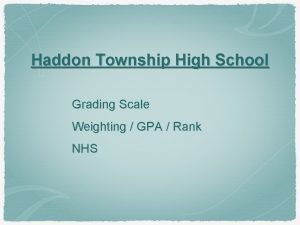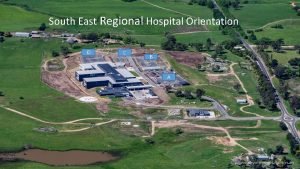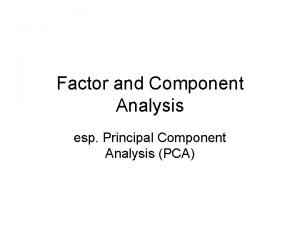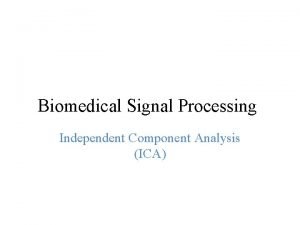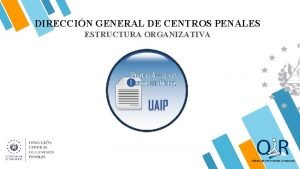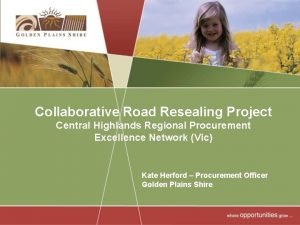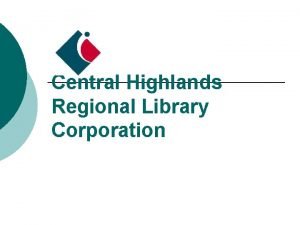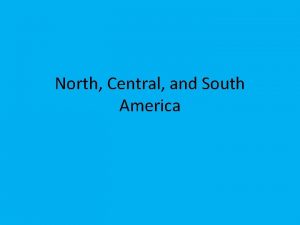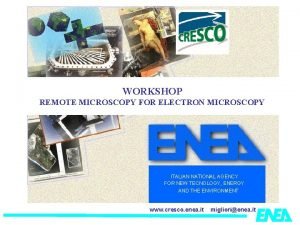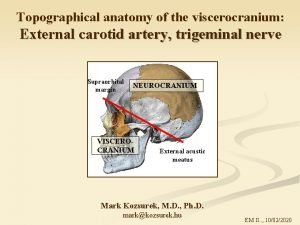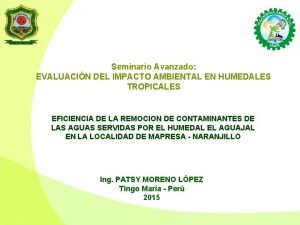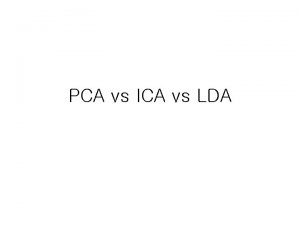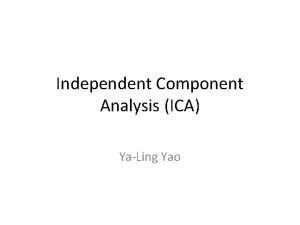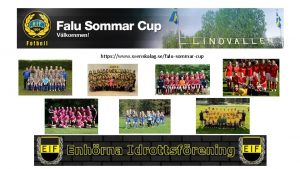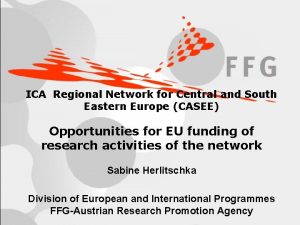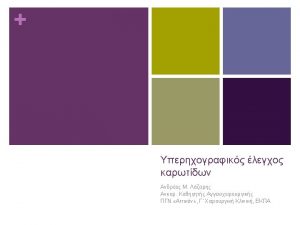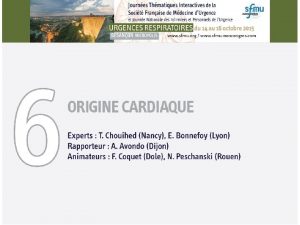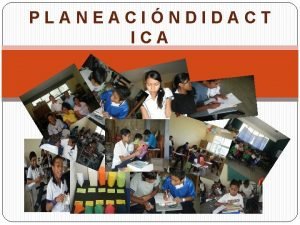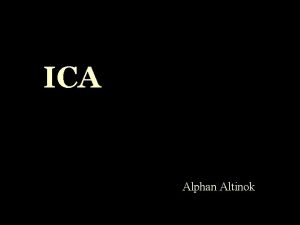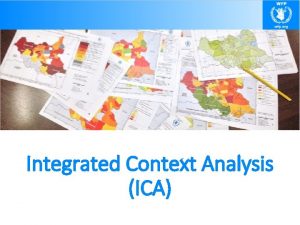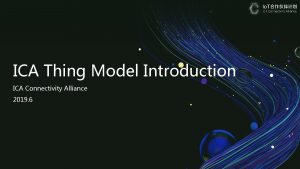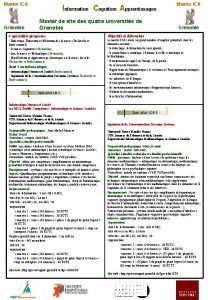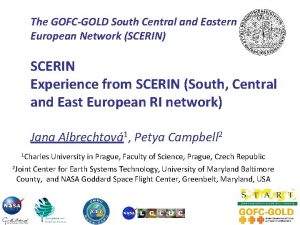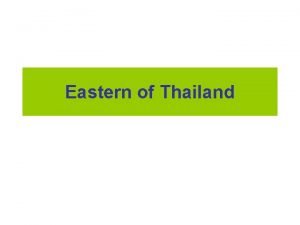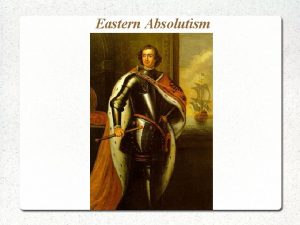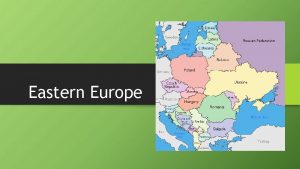ICA Regional Network for Central and South Eastern



















- Slides: 19

ICA- Regional Network for Central and South Eastern Europe - CASEE University of Natural Resources and Applied Life Sciences Vienna Reasons for creating this network and suggestions for future activities Martin H. Gerzabek, University of Natural Resources and Applied Life Sciences 06. 10. 2020 Martin H. Gerzabek 1

Facts and Figures (I) of BOKU Vienna University of Natural Resources and Applied Life Sciences Vienna Students: 9. 500 Scientific staff: ~1. 200 (850 financed by projects) Other staff: 430 Teaching, research and administrative facilities are located throughout Vienna at 20 different sites. Most of them are in the green districts – the 18 th and 19 th district – and are readily accessible by public transportation. BOKU main building: A-1180 Vienna, Gregor Mendel-Strasse 33 06. 10. 2020 Martin H. Gerzabek 2

Facts and Figures (II) of BOKU Vienna University of Natural Resources and Applied Life Sciences Vienna Total budget: ~ EUR 100 mio. External funds (2009): EUR 33 mio. Number of ongoing projects: 750 Scientific publications (2009): ~2500 Co-operation contracts with partner companies and universities world-wide: 331 06. 10. 2020 Martin H. Gerzabek 3

Major sites of BOKU University of Natural Resources and Applied Life Sciences Vienna, Türkenschanz e, Muthgasse Tulln 06. 10. 2020 Martin H. Gerzabek 4

Challenges for the knowledge society I (UNESCO Forum Occasional Paper Series Paper No. 4, Carlos Tünnermann Bernheim and Marilena de Souza Chaui, 2003) University of Natural Resources and Applied Life Sciences Vienna § emergence of a new economic and productive paradigm § most advanced economies are based on the greatest availability of knowledge § knowledge and information became integrated into capital itself § internationally recorded discipline-based knowledge took 1, 750 years to double for the first time, counting from the start of the Christian era; it then doubled in volume every 150 years and then every 50. It now doubles every five years. § It is estimated that every four years the amount of information available in the world doubles; as the analysts observe, however, we are only capable of giving attention to between about 5% and 10% of that information. 06. 10. 2020 Martin H. Gerzabek 5

Challenges for the knowledge society II (UNESCO Forum Occasional Paper Series Paper No. 4, Carlos Tünnermann Bernheim and Marilena de Souza Chaui, 2003) University of Natural Resources and Applied Life Sciences Vienna § How to handle the knowledge increase? § How to judge the relevance of the additional knowledge? § Time-space compression: makes itself felt in universities, with reduced graduation and post-graduation time and also less time for masters dissertations (political will and economic pressure). Increased speed in teaching, less time for the reception of the information. § The greater complexity of the knowledge calls for increased interdisciplinarity in teaching and research § Scarcity of time in an university for reflection, criticism and an examination of the instituted knowledge and possible ways of transforming or moving beyond 06. 10. 2020 Martin H. Gerzabek 6

Challenges for universities in the knowledge society University of Natural Resources and Applied Life Sciences Vienna § Knowledge generation § Relevance of the studies § Internalization of higher education: acting internationally in research and teaching, but applying the knowledge to local and regional problems § Balance between the basic functions of teaching, research and service § Quality in research and teaching § Improving the administration of higher education 06. 10. 2020 Martin H. Gerzabek 7

University of Natural Resources and Applied Life Sciences Vienna Higher education as basis for the regulation of the human population growth. Source: Popnet No. 41, IIASA 2010 06. 10. 2020 Martin H. Gerzabek 8

HANPP %: Human appropriation of net primary production. University of Natural Resources and Applied Life Sciences Vienna Helmut Haberl, Karl-Heinz Erb, Fridolin Krausmann, Veronika Gaube, Alberte Bondeau, Christof Plutzar, Somone Gingrich, Wolfgang Lucht and Marina Fischer-Kowalski. 2007. Quantifying and mapping the global human appropriation of net primary production in Earth's terrestrial ecosystem. Proceedings of the National Academy of Sciences of the USA. 104: 12942 -12947. 06. 10. 2020 Martin H. Gerzabek 9

Malnutrion world wide in the year 2009; regions (in Billions), FAO 2009, The State of Food Insecurity in the World 06. 10. 2020 University of Natural Resources and Applied Life Sciences Vienna Martin H. Gerzabek 10

Reasons for the ICA-CASEE network University of Natural Resources and Applied Life Sciences Vienna § Enormous challenges for university development at present § Bologna process § Excellence in research, education and university management (increasing competition between higher education institutions!) § Specific challenges for life science universities to develop the basis for the future development of mankind § Food and water security, environmental protection § Sustainable use of natural resources (soil, bioresources, water, . . ) § Development of high-end technological methods in biotechnology (biorefinery, renewable energy, . . ) § Landscape development; town- and country planning § And many more. . . 06. 10. 2020 Martin H. Gerzabek 11

Reasons for the ICA-CASEE network University of Natural Resources and Applied Life Sciences Vienna § EU-Strategy for the Danube Region (http: //ec. europa. eu/regional_policy/cooperation/danube/index_en. htm) 06. 10. 2020 The European Council has formally asked the European Commission to prepare an EU Strategy for the Danube Region before the end of 2010 : “Sustainable development should also be pursued through an integrated approach to the specific challenges facing particular regions (…). ” The Danube Region in this context refers to: Germany (Baden-Württemberg and Bavaria), Austria, the Slovak Republic, the Czech Republic, Hungary, Slovenia, Croatia, Serbia, Bosnia and Herzegovina, Montenegro, Romania, Bulgaria, the Republic of Moldova and Ukraine What is the added value for other Member States? First of all, a better Danube Region will be better for the union as a whole. Secondly the EUSDR, tests a macro-region working method. It could be viewed as a pilot project for the rest of the EU, a show case for more efficient cooperation and coordination. The Strategy is envisaged to be endorsed by Member States under the Hungarian presidency in the first half of 2011. However, it should be Martin H. Gerzabek noted, that the Strategy will be an ongoing process and that the adoption of the Strategy will only mark the start of the implementation 12

Why ICA? (Association for European Life Science Universities) University of Natural Resources and Applied Life Sciences Vienna § Founded in 1988 as the Interfaculty Committee Agraria, ICA, is a network of more than 60 life science universities, from the EU and neighbouring countries (European Higher Education Area). § ICA’s vision is to enhance the members’ success in the international market place, in Europe and globally, by providing a supportive environment to share experience, to cooperate in new ventures, and to benefit from the resulting synergy. § ICA also liaises with other European and international networks, and with international student associations. 06. 10. 2020 Martin H. Gerzabek 13

Why Central and South Eastern Europe? University of Natural Resources and Applied Life Sciences Vienna § Many historical links between universities are already § § 06. 10. 2020 active Region comprised of EU member states, candidate countries and possible candidates § Important region for the European Union development Region of tremendous development in ecological, economical and societal respect Region with a highly significant potential for further economical growth and improvement. High cross-linking of economies (investors, multinational companies, . . . ) Martin H. Gerzabek 14

University of Natural Resources and Applied Life Sciences Vienna 06. 10. 2020 Martin H. Gerzabek 15

Regional distribution of founding members of ICACASEE 06. 10. 2020 Martin H. Gerzabek University of Natural Resources and Applied Life Sciences Vienna 16

BOKU Co-operation with CASEE partner countries, grouped by activity University of Natural Resources and Applied Life Sciences Vienna Martin H. Gerzabek

Major aims of the ICA-CASEE network University of Natural Resources and Applied Life Sciences Vienna § ICA-CASEE is a non profit organisation which aims to stimulate and support its member institutions in the development of a European dimension in education and research through the development of concerted actions and in engaging globally. § Fostering of regional university co-operation on all different levels and topics: § Improving university management and development § Improving teaching programmes and foster educational cooperations between universities § Leverage and encourage research co-operations using the programmes of e. g. § The EU Framework § Joint Programming? § new “Action”-Programs of Austria and neighbouring countries 06. 10. 2020 Martin H. Gerzabek 18

Universität für Bodenkultur Wien Rector Univ. -Prof. DI Dr. Martin H. Gerzabek Peter-Jordan-Straße 82, A-1190 Vienna Tel. : +43 1 47654 -1001, Fax: +43 1 47654 -1005 Martin. gerzabek@boku. ac. at , www. boku. ac. at University of Natural Resources and Applied Life Sciences Vienna Acknowledgement: To all founding members of CASEE!!! Margarita Calderon-Peter & her team, The keynote speakers, Thank you for your attention! 06. 10. 2020 Martin H. Gerzabek 19
 Nctra
Nctra High school grading scale
High school grading scale Eastern south america
Eastern south america Italian cdm
Italian cdm South delta leland ms
South delta leland ms South east regional hospital
South east regional hospital Pca vs ica
Pca vs ica Pca vs ica
Pca vs ica Consejo criminologico central
Consejo criminologico central Central highlands regional council tenders
Central highlands regional council tenders Central highlands library
Central highlands library North, central and south america
North, central and south america Ica protocol
Ica protocol Occipital artery
Occipital artery Rdp vs ica
Rdp vs ica Indice ica
Indice ica Pca lda
Pca lda Pca vs ica
Pca vs ica Ica hörnan enhörna
Ica hörnan enhörna Paul merolla
Paul merolla

